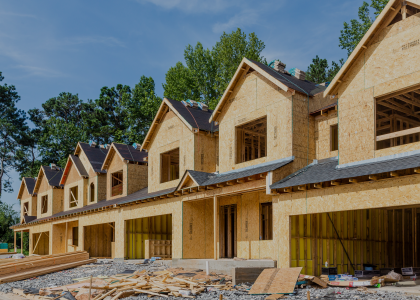Many families struggle to pay energy bills, but innovative policies that reduce energy burdens and accelerate an efficient and equitable transition off fossil fuels are catching on in more states.
Low-income households are often faced with the threat of disconnection from utility service and painful choices between affording energy and other critical needs, harming the health and wellbeing of the most vulnerable. A growing movement to reduce energy bills for low-income households through policies like percentage of income payment programs (PIPP), along with energy-saving improvements, will lower energy burdens for the long term.
Most states have not focused energy efficiency efforts on underserved households, which has contributed to insufficient funding for helping them save energy, entrenching racial and social inequities. Before this year only Virginia and New York had explicit targets to reduce energy burdens through their energy efficiency requirements for utilities. And only Massachusetts, Pennsylvania, and Washington, DC, had set minimum energy savings targets for efficiency programs geared to serve low-income households. However, there have been some positive developments from state officials and regulators this year that have accelerated progress.
Directly limiting energy bills
In 2022 the New York Public Service Commission forgave $567 million in energy bill debt for extremely low-income households. In January the commission forgave an additional $672 million for low- to middle-income households and businesses that weren’t included in last year’s decision, made more than 800,000 additional households eligible for energy bill discount programs, and committed to an Energy Affordability Guarantee—essentially a PIPP—that limits energy bills for 20,000 low-income households to no more than 6% of their income. New York’s EmPower Plus program, which further links debt forgiveness and income-based limits on energy bills together with energy efficiency and electrification investments, has created a compelling new model for advancing energy affordability across the country.
In Virginia a similar PIPP is finally set to start enrolling customers next year. The Virginia program was initially passed by the legislature in 2020 and is the first that explicitly requires pairing the electric bill caps with participation in energy efficiency programs. Initial guidelines from the Virginia Department of Social Services indicated that PIPP participants will automatically be eligible and signed up for an energy audit, provided information on Virginia’s weatherization provider network and practical ways to reduce household energy use, and given resources on the use and maintenance of installed energy efficiency measures.
Regulators in at least five other states have taken interim steps this year toward setting comparable policies for advancing energy equity. The Colorado Public Utilities Commission adopted an energy affordability work plan that includes easing enrollment in the state’s PIPP, ending utility disconnections during extreme cold weather, and planning for an efficient and equitable electrification transition. The Wisconsin Public Service Commission investigated potential new energy affordability programs and received dozens of comments, most supporting a PIPP structure. The California Public Utilities Commission adopted a set of principles to evaluate proposed new rate designs from the state’s utilities that will include potential income-varying charges that could function similarly to a PIPP.
The Maryland Public Service Commission has asked for public comments by the end of January on implementing programs to reduce energy burdens, including PIPPs. And in a truly groundbreaking decision charting a future toward efficient electrification, the Massachusetts Department of Public Utilities committed to a proceeding to address energy affordability in that transition. Two utilities in Massachusetts—Unitil and National Grid—have already proposed significant improvements to their rate discounts for the lowest-income households, reaching as high as 50–55%, a substantial increase from current levels of 30–35%.
Reducing energy costs for low-income households is critical, but it should be paired with energy efficiency to ensure that households in marginalized communities are not left in inefficient, uncomfortable, and unsafe homes with needlessly higher utility bills.
Ensuring efficiency programs serve low-income households
This year at least three states have added specific annual energy savings targets for programs supporting low-income households, a critical step for further improvement. The Virginia legislature set a modest requirement for the state’s two largest investor-owned utilities to meet a 1% cumulative annual energy savings target for low-income households.
The Maryland legislature went further, requiring a ramp up to a 1% incremental annual energy savings target by 2026. Incremental savings demonstrate greater progress because they are one year of energy savings from measures implemented under programs in a given year, whereas cumulative savings are the savings from all the measures that have been implemented under the programs in that year and in prior years that are still saving energy. The Maryland Public Service Commission will decide on a plan to meet that requirement before the end of the year. But even those requirements, while admirable, should at minimum match the level of energy savings that the state requires utilities to meet for customers overall—in Maryland those exceed 2%. The Michigan legislature rose to that challenge by setting a goal for energy waste reduction programs serving low-income households to meet or exceed the savings levels of programs for all customers and requiring at least 25% of the spending to reach those households.
These states are demonstrating new ways forward toward a more efficient and equitable future that reduces energy burdens for low-income households as we transition off fossil fuels. But more improvements still need to be implemented, more states need to take action, and overall progress toward energy equity must be accelerated.



